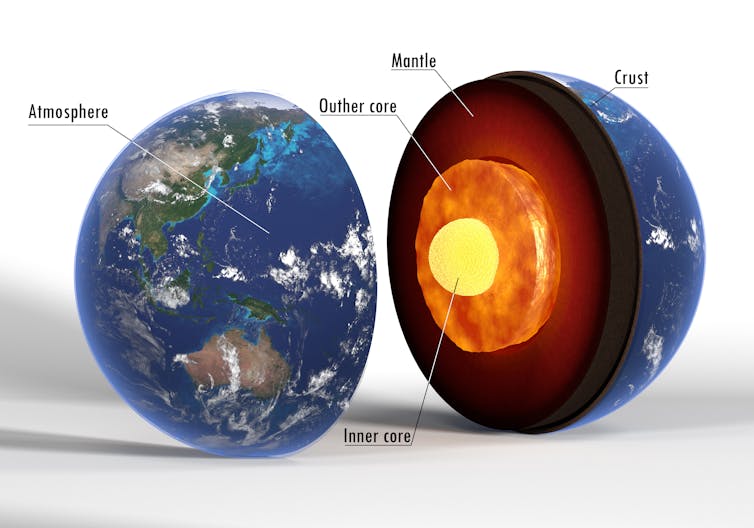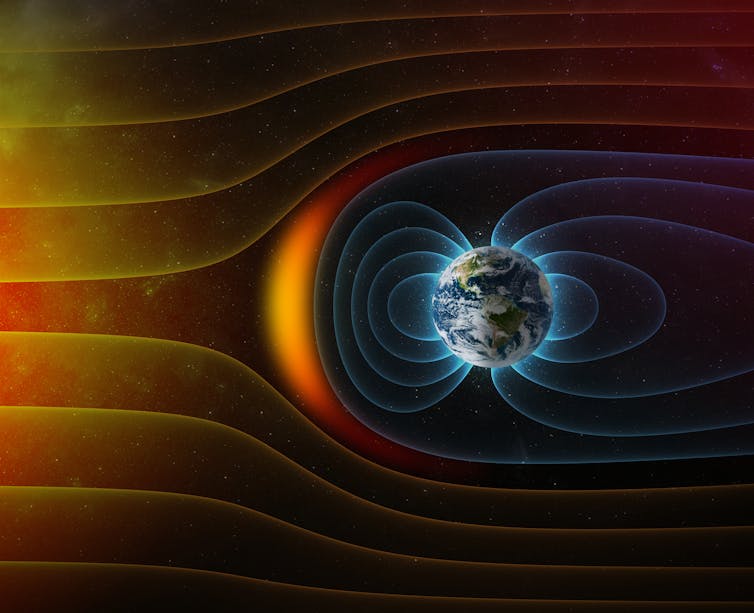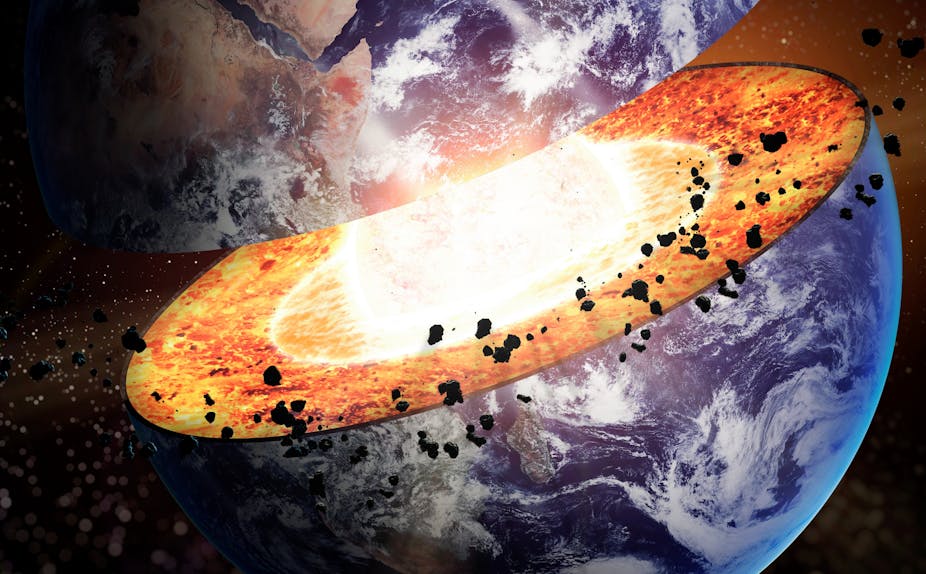Curious Kids is a series for children of all ages, where The Conversation asks experts to answer questions from kids. All questions are welcome: find out how to enter at the bottom of this article.
What would happen if the Earth’s core was no longer molten hot? – Amelia, age 13, Devon, UK
Thanks Amelia, that’s a very good question! The Earth’s core is cooling down very slowly over time. One day, when the core has completely cooled and become solid, it will have a huge impact on the whole planet. Scientists think that when that happens, Earth might be a bit like Mars, with a very thin atmosphere and no more volcanoes or earthquakes. Then it would be very difficult for life to survive – but that won’t be a problem for several billions of years.
Right now, the Earth’s core is not entirely molten. The inner core is a sphere of solid iron, while the outer core is made of molten iron thousands of kilometres thick.

Scientists know this because the shock waves made by earthquakes can be recorded on the other side of the Earth – and we would not expect to see them there if the inner core was also molten.
The whole core was molten back when the Earth was first formed, about 4.5 billion years ago. Since then, the Earth has gradually been cooling down, losing its heat to space. As it cooled, the solid inner core formed, and it’s been growing in size ever since.
But this process is very slow: the inner core only grows about one millimetre a year, because the Earth has a rocky mantle in between its hot core and its cold surface, which stops it from cooling down too quickly – just like your coat keeps you warm in winter.
The slow cooling of our planet causes the molten iron in the outer core to flow and swirl fast as heat is transported to the mantle, and this gives Earth its magnetic field. The magnetic field is like a magnet that acts at a distance, and even though we cannot see it with our eyes, it does lots of important jobs on our planet.

The Earth’s magnetic field protects life on the Earth’s surface from harmful particles coming from the sun. It also keeps the planet’s atmosphere in place and helps animals to find their way around.
The heat escaping from the core also makes material move around in different layers of our planet – from the rocky mantle to the rigid plates on the surface, where you and I live.
This movement can cause the plates on the surface to rub together, which creates earthquakes and volcanoes. That’s why living in places where two plates meet – such as Nepal or Japan – can be very dangerous.

When the molten outer core cools and becomes solid, a very long time in the future, the Earth’s magnetic field will disappear.
When that happens, compasses will stop pointing north, birds will not know where to fly when they migrate, and the Earth’s atmosphere will disappear. This will make life on Earth very difficult for human beings and other life forms.
When the Earth has cooled completely, the movement in the mantle will also stop eventually. Then, the plates on the surface will no longer move and there will be fewer earthquakes and volcanic eruptions.
You might think that this would be good for people – especially those living in places like Tokyo – but volcanic eruptions also produce fertile soil for farming, and gases that make up the air that we breathe.
After all this, Earth could look a bit like Mars. On the surface of Mars, scientists have seen features that are related to volcanoes and moving plates. But they are not moving any more, and there is no magnetic field and only a thin atmosphere left.
We do not know whether the core of Mars is still molten or not, but a robot called InSight recently landed on Mars that will help us to find out!
But for now, you don’t have to worry about the Earth’s core losing all its heat and becoming solid, because the mantle is wrapped around the core, keeping it nice and warm.
Hello, curious kids! Have you got a question you’d like an expert to answer? Ask an adult to send your question to us. You can:
* Email your question to curiouskids@theconversation.com
* Tell us on Twitter by tagging @ConversationUK with the hashtag #curiouskids, or
* Message us on Facebook.

Please tell us your name, age and which town or city you live in. You can send an audio recording of your question too, if you want. Send as many questions as you like! We won’t be able to answer every question, but we will do our best.
More Curious Kids articles, written by academic experts:

